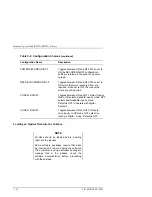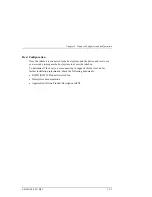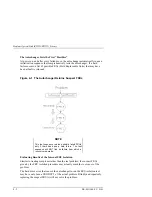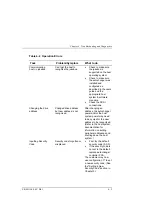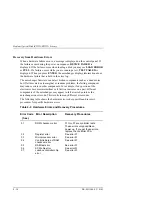
Medium Optical Disk (RW551/RW552) Library
4–6
EK–MOL80–SV. B01
Table 4–1 Information Logs (
continued
)
Log Name
Description
MICROMOVE 1-6
The IDs of the last six micro-moves for the
original move command issued prior to the
failure (individually displayed). Step through
the micro-move IDs by pressing NEXT or
PREV.
MICROMOVE ERR #
The micro-move error ID of the failed
move.
TOP or BOTTOM PICKER
Displays either "TOP" or "BOTTOM"
indicating which picker side is active.
NORTH or SOUTH THUMB
Displays either “NORTH” or “SOUTH”
indicating which thumb on the translate
mechanism is alive.
Getting Error Information Through the SCSI Bus
When there are errors in autochanger movements, two main approaches are
available to get information and to run exerciser tests. The approach usually
depends on whether the error encountered was a hard error or whether it was a
soft or intermittent error.
•
Troubleshooting Using the Control Panel and Observation - This method is
usually used in situations where you have a hard error.
•
Troubleshooting Through the SCSI Bus - This method is used in situations
where you have a soft or intermittent error.
Using data on the SCSI bus, you can determine exactly what the autochanger was
doing when a failure occurred; all the way down to the macro-move and
micromoves. Also, through the Log Sense and Request Sense commands, you
can gather information on the optical drive; which cannot be done through the
control panel.
An external utility is needed to read the data on the SCSI bus. A diagnostic
utility called DOSDASS4 provides this capability. If required, the DODASS4
utility and instructions can be obtained from the Digital Customer Support
Center. A PC with a 154X Adaptec controller is required to use the DOSDASS4
utility.


